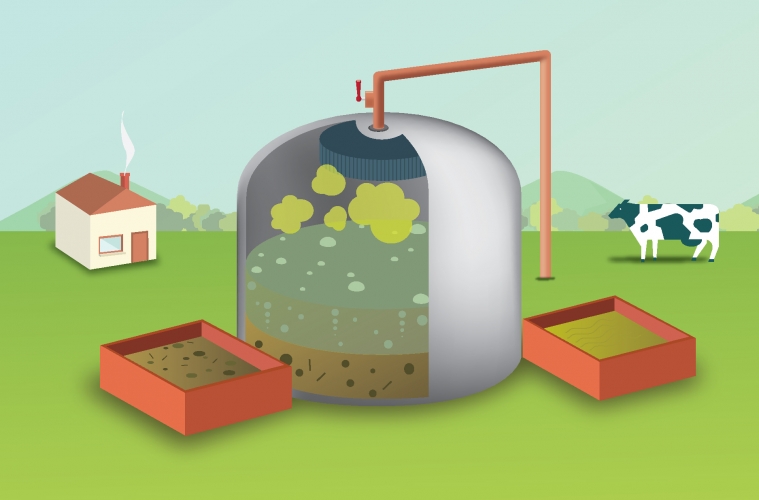RIO DE JANEIRO, BRAZIL – Biogas, considered in the past a niche source, is already starting to find a relevant space in the energy matrix, either in energy generation or as a fuel. This month, a significant step was taken with the partnership formed between the Brazilian Association of Piped Gas Distributors (Abegás) and the Brazilian Biogas Association (ABiogás).
The two entities have formed a working group to develop actions to boost the injection of biomethane (biogas with high purity levels) in the distributors’ network when many companies seek to reduce greenhouse gas emissions.
According to ABiogás’ executive manager, Tamar Roitman, 25 new plants have already announced investments of around R$60 billion (US$12 billion) by 2030 to offer 30 million m3/day – out of a potential that would exceed 120 million m3/day.

“We want to transform this potential into reality,” said Marcelo Mendonça, Abegás’ Director of Strategy and Market.
Data from CIBiogás, a biofuel reference center, show exponential growth of the source in the last five years: in 2017, there were 271 plants, which increased to 755 in 2021, with an offer of 2.3 billion m3 of biogas. The center’s expectation is a 22% increase in supply, with 56 plants in operation or renovation.
“The 4% of plants under implementation correspond to 15% of the biogas volume, suggesting a larger size in the new units,” said Karina Navarro, a member of the CIBiogás technical team in the study called Panorama of Biogas in Brazil in 2021.
Regulation changes have the effect of forming markets, and it couldn’t be different in the case of biogas or biomethane. One of the examples is the regulatory framework for distributed micro and mini generation, in effect since 2012 and updated last year, enabling biogas generators, which receive credits when injecting electricity into the distributors’ grid.
Another example was the legal sanitation framework, which sets a deadline for the end of open-air dumps, forcing the destination of solid waste to landfills, with some treatment – creating the basis for biogas. Financial incentives have also been helping biofuel to open space. At the end of last March, the federal government launched the Methane Zero program, which aims to encourage production by creating credit lines for new projects.
There are three main sources of biogas production: residues and waste from farming and livestock, industry (producer of organic waste), and sanitation – landfills and sewage. Agriculture and cattle raising account for most of the supply, but one can already see a substantial advance in vinasse resulting from the ethanol production process. Raízen, for example, recently announced the construction of its second biogas plant – the first dedicated to biomethane – from vinasse and filter cake, residues from ethanol production.
Located in Piracicaba, the unit will have the capacity to produce 26 million cubic meters per year, enough to supply 200,000 households. The production has already been sold to Yara Brasil Fertilizantes and Volkswagen on long-term contracts. Ricardo Mussa, president of Raízen, says that the new unit represents the materialization of the company’s plan to expand business in renewable energies.
Although incipient, sanitation is also attracting investments. The Urca Energia group inaugurated the commercial operation of its third biogas-powered generator this week, located in Mauá (São Paulo). The plant has a power of 5 megawatts (MW), corresponding to 27% of the company’s total capacity.
Two other plants totaling 9 MW are in operation: Seropédica (Rio de Janeiro) and Ipiranga do Norte (Mato Grosso). The fourth plant of 5 MW should start operating in the second half of this year in São Gonçalo (Rio de Janeiro). Therefore, the company will reach 19 MW in distributed generation, with R$82 million in investments.
Besides Eva Energia, the group acquired Gás Verde, a biomethane producer, at the beginning of the year, in a R$1.2 billion deal. Among Gás Verde’s assets is a plant in Seropédica, with a production capacity of 120 thousand m3/day and an expansion plan for 200 thousand m3/day.
“We have noticed a great interest on the part of companies in adopting biomethane in their production processes and, thus, enabling an effective change in their operations, migrating to a cleaner matrix,” said Marcel Jorand, CEO of Urca Energia.
In this sense, emphasize Tamar, from ABiogás, and Marcelo, from Abegás, the injection of biomethane into the grid also aims to attract another segment, heavy transportation, currently impacted by the volatility of diesel oil prices. The volume of diesel imported today would correspond to the 30 million m3/day offered by the next projects, points out the Abegás executive.
“With more infrastructure for distribution, the interest will certainly increase; it is a growing expectation from both sides [producer and distributor],” Tamar adds.
With information from Valor Econômico

